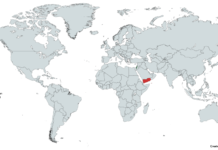There is no question that the Federal Housing Administration (FHA) loans are great loans that help many first-time homebuyers, low-income Americans, or minorities. However, unfortunately, these FHA mortgages are now going through the highest delinquency rate in over forty years.
Late FHA loans actually rose to about as high as 16% in the second quarter, a rise from just over 9% in the three months prior. Moreover, this is one of the highest levels of default since 1979, according to the Mortgage Bankers Association. This rise is even more disturbing when you compare it to the delinquency rate for regular loans, which is currently sitting at a solidly-low 6.7%.
Why are the FHA defaults so high? This has to be due in part to the fact that millions of Americans stopped paying their mortgages in the wake of the coronavirus catastrophe. Of course, individuals that are classified as low-income are more likely to have FHA loans. Additionally, borrowers with less-than-perfect credit will often also be able to qualify with these loans with a smaller down payment as well.
Even though these statistics are alarming, it isn’t time to panic just yet. Most of these individuals that have defaulted will be protected from a foreclosed home by the federal forbearance program, which gives borrowers that have been hit by a pandemic-related hardship the ability to delay their payments for up to a year. When you consider that the job losses continue to mount and Congress is dragging their feet on a new stimulus package, this would definitely be welcome news for most individuals. At this moment, about 4.1 million homeowners are currently in forbearance, which is a rate of just over 8% of loan balances.
New Jersey, Nevada, New York, Hawaii, and Florida are some of the states with the highest delinquency rates. Part of the reason for that is because there is a larger-than-normal amount of hospitality jobs in these states, and they have been hit hard by the pandemic. The good news is that the spike is still better than the Great Recession of 2008, simply because there have been many years of home-price gains and that has acted as a solid cushion of protection.









